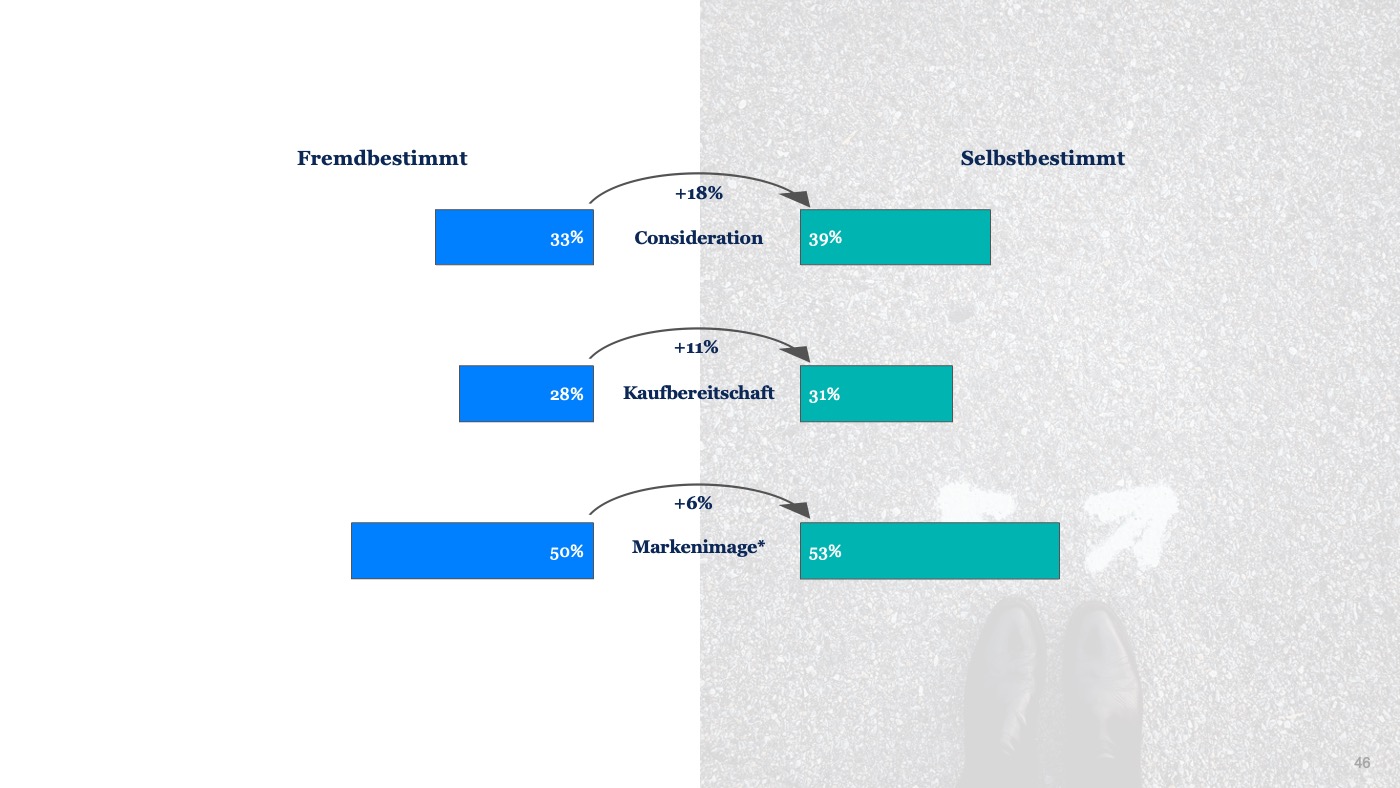High advertising impact without cookies? With Choice-Driven Ads!
For the fifth year in a row, Welect proves through an advertising effectiveness study with the Choice-Driven-Advertising concept that self-determined advertising consumption shows significantly greater product and purchase interest for the advertiser's product area.
In the Open Web, a full 79% of User can only be identified to a limited extent. These users either have an adblocker switched on or do not give their consent for cookies.
However, cookies will be a thing of the past from 2024.
It will then be very difficult to reach the right target group with the help of cookies. For the market, it means now: develop alternatives.
We, Welect, are dropping cookie targeting and putting the user in the foreground. No cookie targeting means no data collection and data-protected surfing.
Welect offers much more for your digital campaigns.
We replace cookie targeting directly with the users themselves.
When users decide for themselves which commercial they want to watch, this brings many benefits for both users and publishers. User-choice makes advertising user-friendly and strongly activates users. Very importantly, annoying advertising is prevented and positive spillover effects on the sender are created. But not only that. Let's take a closer look.
As part of a representative and quantitative online survey, we interviewed 2,200 adults and measured our advertising impact with the help of four major brands. The study design made it possible to compare the impact of the spots in self-determined and third-party advertising contact.
You can find the detailed study results here.
User choice targeting = clear uplifts in advertising KPIs
The choice-driven advertising concept is consistently well received by users - including more than half of AdBlock users who actively try to avoid online advertising. By adding AdBlock placements and non-consent users, we gain additional incremental reach with our placement. Cookie reach is now very limited with 21% identifiable internet users.
At the same time, the concept encourages more conscious viewing of advertising and conveys a better feeling with regard to data security than other forms of online advertising.
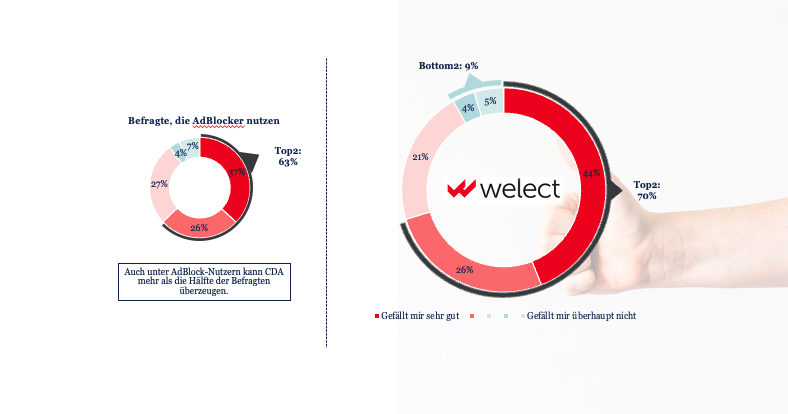
The self-determined advertising contact has a positive effect on the reception of the spots: on average, every advertising KPI considered is higher in the choice-driven ad: Brand recall (+5%), Liking (+25%), Message comprehension (+12%), Detailed evaluation (+11%), Activation (+7%).
The positive evaluation of the concept of being able to select a spot oneself is also expressed in the evaluation of the individual spots: If the spots are selected by the viewers themselves, the general liking and, in some cases, also the detailed rating is better. In addition, there is an overall tendency for users who select a spot themselves to have a better image of the brand in question.
In all 4 cases, the users are more often able to reproduce the correct brand and usually also understand the message better. Depending on the spot, the purchase probability is also more pronounced at +18%.
Because the users retain control, the reception situation is more positive than with an externally determined advertising contact. Many would like to have this opportunity more often and also state that they watch the commercial more attentively in this way. This has an effect on the perception of the commercial. Self-selected spots are rated better, particularly in terms of the clarity of their message, and are much better at arousing the interest of users, attracting their attention and appealing to them more strongly.
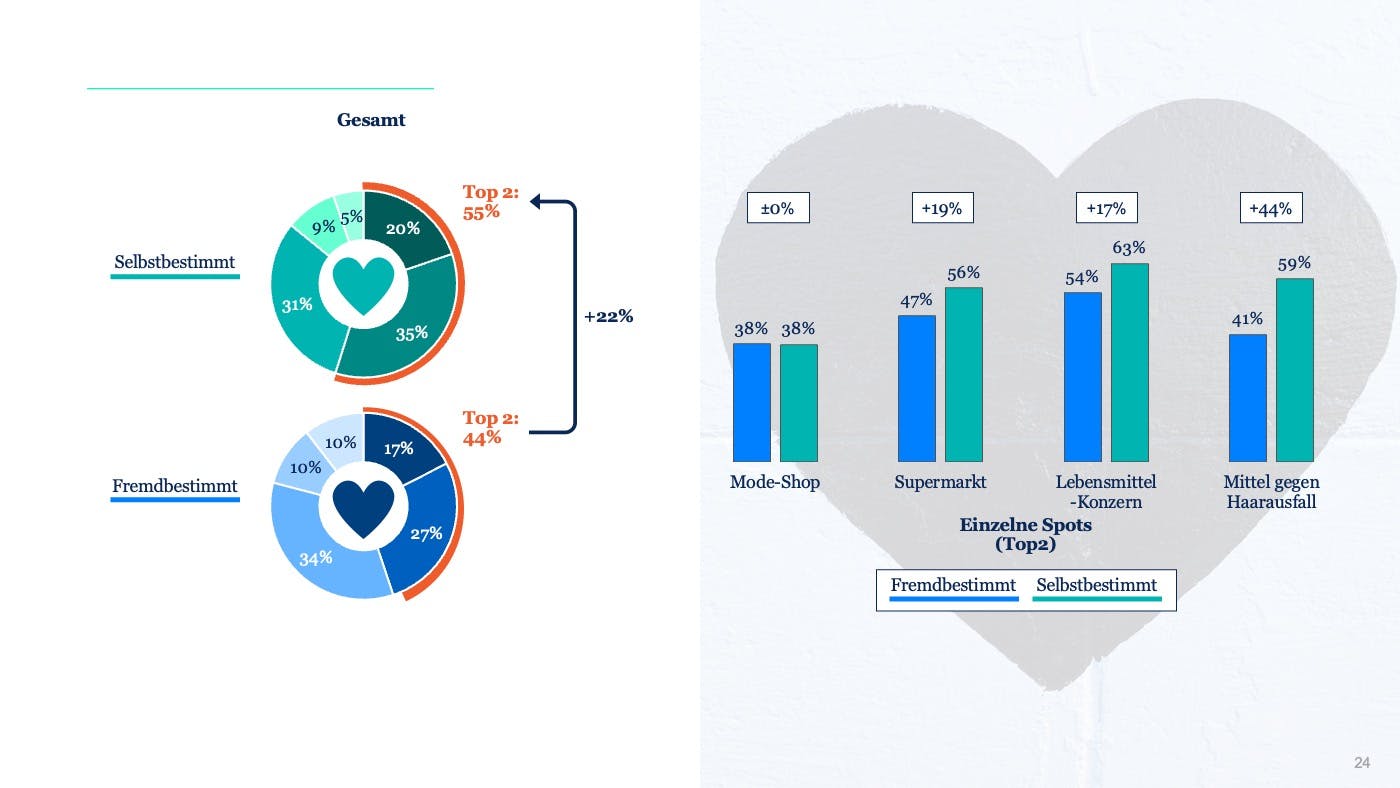
The product, brand or topic determines what users decide on.
For more than 70% of respondents, interest in the product or brand is one of the reasons for their choice. In addition, the design of the advertising material is also a very important factor in addressing the target group.
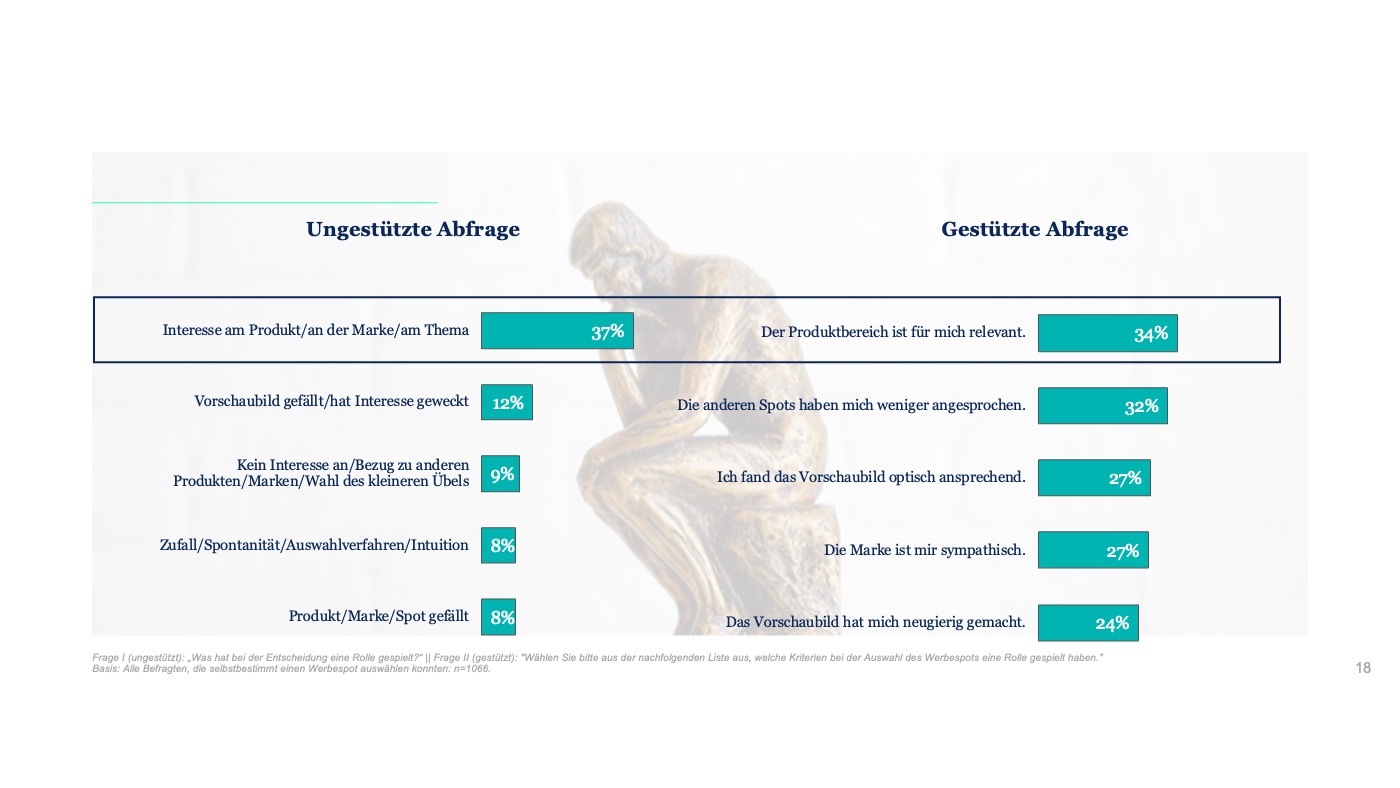
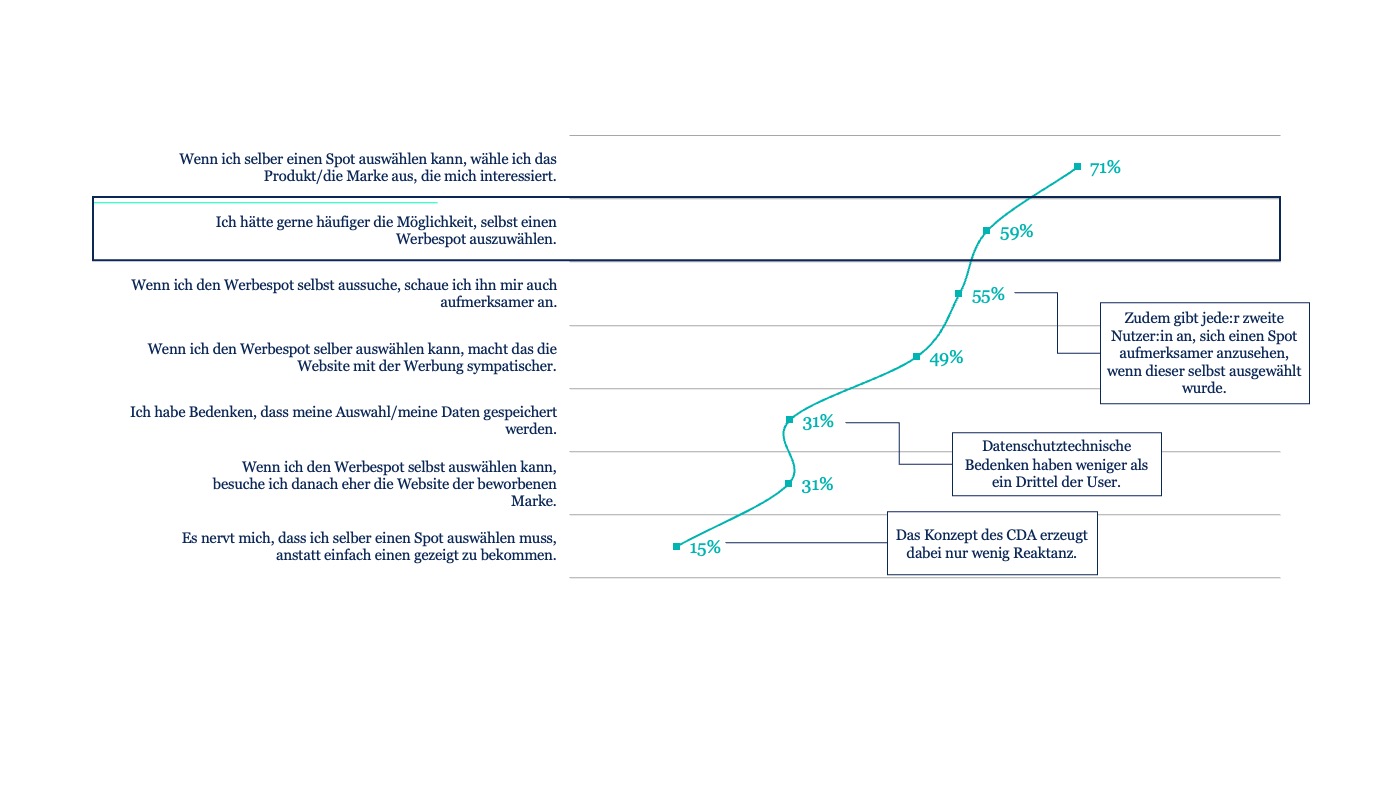
Only relatively few have concerns about data privacy & security in connection with choice-driven advertising. Compared with other online advertising formats, well over a third even find the cookieless concept more trustworthy. Another third rate choice-driven advertising as trustworthy overall.
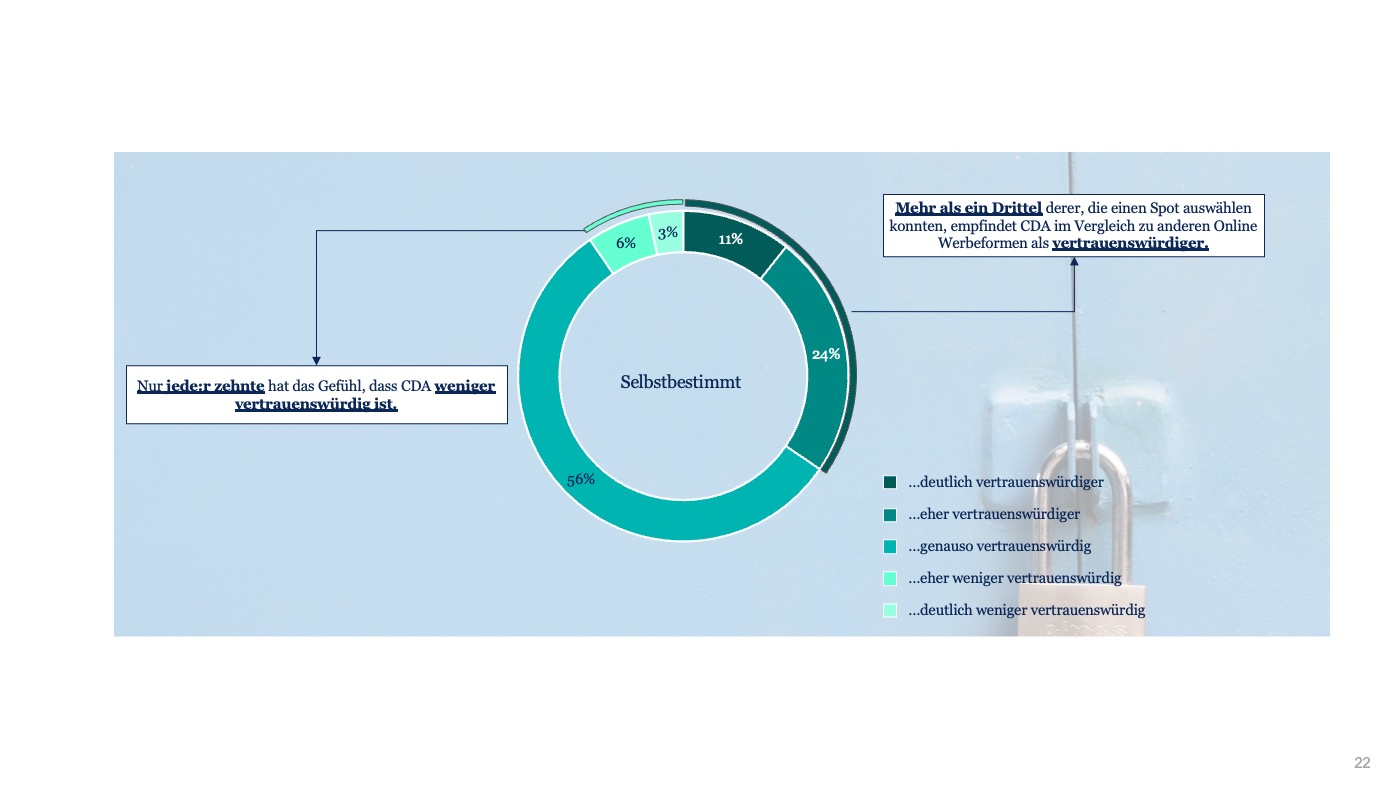
Higher advertising effects when control is handed over to the user
In the advertising impact study, two groups were assigned to one of two test situations. The first group was shown a conventional preroll of a randomly selected brand, while the second group was shown an AdChooser consisting of four teaser with different commercials from which the user can choose. By all means, the results of the second group are significantly better, because they are allowed to independently select a brand's spot according to interest and preference.
Overall, this meant that the respondents liked the commercials much better when they could choose for themselves which commercial they wanted to see.
In conclusion, it can again be said with this advertising impact study that users are much more likely to accept self-determined advertising contact. This results in higher advertising effects and correspondingly positive performance results in terms of VTR, CTR and qualified visits (on-site performance). The effects are reflected in a significant uplift in consideration (+18%). The user automatically avoids irrelevant advertising, such as the same advertising from other genres like TV, and thus generates his own natural, cross-media frequency cap. Replacing servers and exchanges by the user brings of course another very important advantage: There are fewer requests and auctions and thus a Co2 emission saving of more than 80% for a more sustainable communication.
